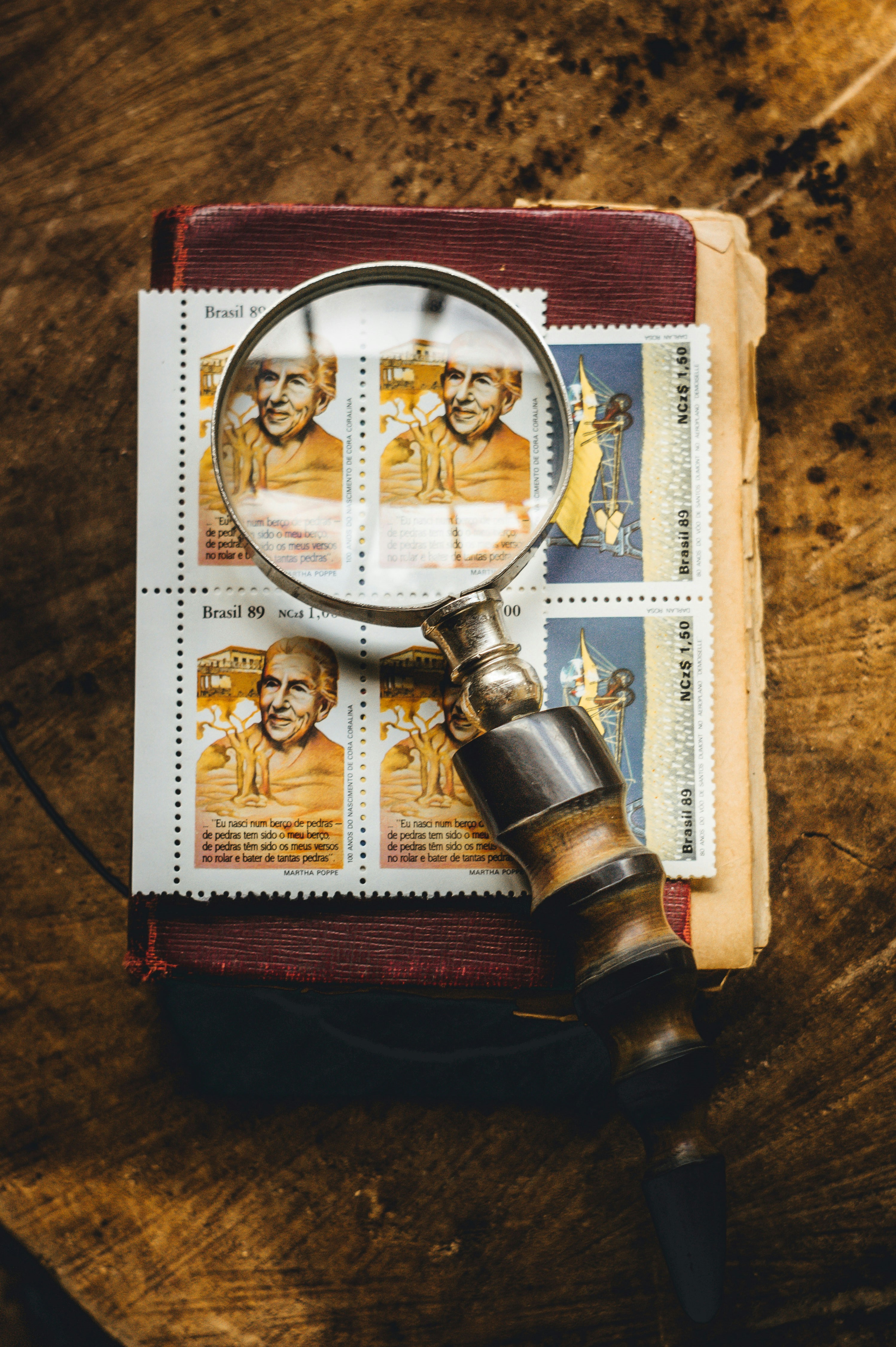
The Fascinating History of Stamp Collecting

The Fascinating History of Stamp Collecting
Introduction: Tracing the Origins of Philately
Stamp collecting is not just a hobby; it’s a window to the past. The origins of stamp collecting take us back to 1864, when Georges Herpin coined the term. He merged two Greek words: “philos,” meaning love, and “atelia,” referring to the exemption from tax, to articulate the essence of stamp collecting. This blend of words highlights the affection collectors have for their stamps but also nods to the tax-free nature of stamps at the time.
Philately goes beyond the act of collecting stamps. It encompasses the study of postage stamps, stamped envelopes, postmarks, and postcards. Philately offers an extraordinary perspective on how nations have commemorated significant events, celebrated cultural achievements, and depicted historical figures and landmarks. Each stamp, postmark, or postcard in a collection is a piece of history, capturing a moment in time and reflecting the socio-political context of a period.
The evolution of philately over centuries narrates a captivating tale of changing worlds and evolving interests. Initially released as mere tools denoting prepayment of postage, stamps have undergone a metamorphosis, becoming highly coveted collectibles and significant artifacts chronicling the passage of time. This journey from functional items to cherished collectibles illustrates the deepening appreciation for these miniature pieces of art and history.
Engaging in a stamp collection offers enthusiasts a unique and rewarding pathway to connect with history. Whether one is a seasoned collector or new to the fascinating world of postage stamp collecting, each stamp, envelope, and postcard is a gateway to exploring various facets of history, art, and culture. Among collectors, there’s always a special buzz around acquiring rare stamps, which are often sought after for their historical importance, uniqueness, and, sometimes, the intriguing stories they carry.
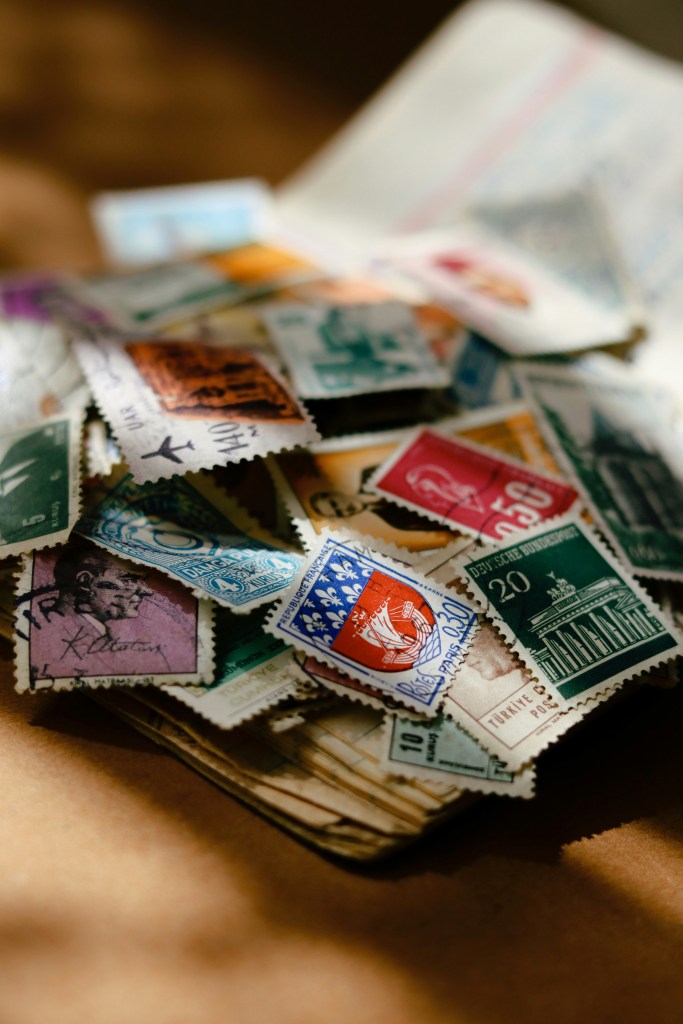
The Birth of Postage Stamps: A Revolutionary Innovation
The inception of postage stamps revolutionized global communication, making it affordable and accessible. This innovation facilitated the exchange of ideas and strengthened international connections, significantly impacting societal structures and global trade. Through their design, postage stamps played a critical role in creating a connected world.
Postal innovations
Postage stamps originated in Great Britain in 1840. They allowed for prepayment when sending letters at a fixed rate. Sir Rowland Hill observed that most transportation costs were due to sorting and handling rather than carriage. Before the postage stamp, recipients had to pay to receive letters, leaving many unclaimed. Hill proposed a pre-paid postage stamp system with a fixed rate for letters. Introducing adhesive stamps, particularly the first stamp, the Penny Black, was an immediate success. The Penny Black featured an image of Queen Victoria.
Following the groundbreaking introduction of the Penny Black—the world’s first postage stamp—other countries quickly recognized the utility and significance of this innovation. Among these early adopters, the United States made its mark by issuing stamps featuring two of the nation’s foundational figures, Benjamin Franklin and George Washington. This marked a pivotal expansion in the use of stamps and intertwined postal services with national identity.
Furthermore, the tradition of issuing commemorative stamps became prominent, starting with the New South Wales stamp in 1888, which celebrated the 100th anniversary of the Australian colony’s founding. Following suit, countries began to release their commemorative stamp.
From manual cutting to airmail innovations
In addition to creating the postage stamp, technological innovations followed suit. Originally, stamps were printed on unperforated sheets of paper, necessitating manual cutting. This process lacked precision, creating a demand for improvement. The British Post Office responded to this need by introducing perforation, a method facilitating the separation of individual stamps. This technical advancement represented a significant leap forward in the efficiency and user-friendliness of postal services.
As the 20th century dawned, the scope of postage stamps continued to evolve, reflecting the changing dynamics of global communication and commemoration. In 1917, Italy pioneered the issuance of airmail stamps, symbolizing the advent of aerial postal services and expanding the horizons of international correspondence. Additionally, the postal system began to explore more specialized categories of stamps, such as special delivery and semi-postal stamps, each serving distinct purposes beyond mere postage.
From Penny Blacks to Modern Marvels: Evolution of Stamp Designs
Exploring the realm of philately offers a fascinating journey through history, art, and communication. From the iconic Penny Black to the latest in modern stamp artwork, the evolution of stamp design showcases a blend of technological progress and artistic expression.
Stamp design evolution
The Penny Black’s introduction marked a pivotal moment, setting a precedent for future postal systems and stamp designs worldwide. Over the years, stamp design has evolved to reflect cultural trends, historical milestones, and technological innovations, transforming these small pieces of paper into sought-after collectibles and contemporary masterpieces, each telling its unique story.
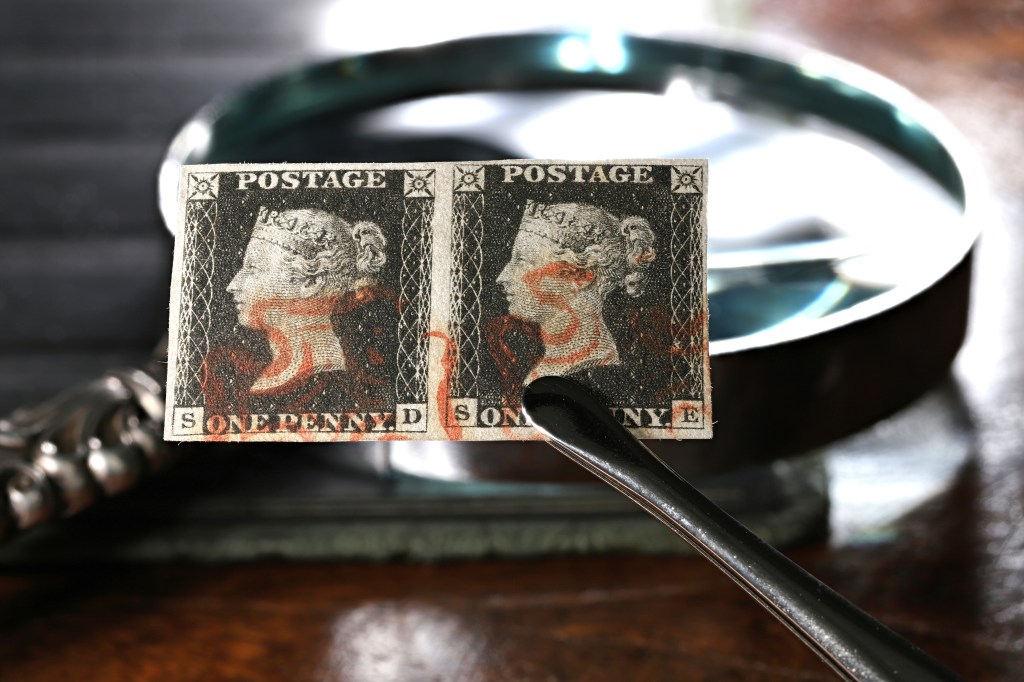
The Emergence of Philatelic Societies: Uniting Collectors Across Borders
Philatelic societies have long served as vital hubs for stamp collectors, nurturing a shared sense of community and passion among enthusiasts. These organizations, ranging from local clubs to international networks, provide a platform for individuals with a common interest in stamp collection. Through regular meetings, exhibitions, and publications, these societies offer members opportunities to exchange stamps, share knowledge, and form lasting friendships.
Stamp collector communities
Notably, the United States Stamp Society stands out as a prominent group dedicated to the appreciation and study of U.S. postage stamps, offering its members a wealth of resources and events. Meanwhile, the Ebony Society of Philatelic Events and Reflections provides a unique space for collectors, emphasizing the representation and achievements of Black philatelists. For those with a specific interest in the earliest issues of stamps, The First Issues Collectors Club offers a specialized community focused on the inaugural postage stamps of the world.
On an international scale, The Royal Philatelic Society of Canada and The Royal Philatelic Society London represent two of the most prestigious organizations, each with a rich history and a commitment to advancing philately through research, exhibitions, and a comprehensive library of philatelic literature. Moreover, the International Society of Worldwide Stamp Collectors caters to those with a more global perspective, promoting an inclusive approach to collecting stamps from every corner of the world.
The 20th Century Renaissance: Philately in the Modern Age
Postage stamp collecting began when stamps were first issued and saw a revival in the 20th century due to their visual appeal and artistic designs. People collected these miniature pieces of art and meticulously organized them in stamp albums, exchanged duplicates with friends, and even established clubs dedicated to the hobby.
20th-century
During the 20th century, particularly in the 1930s, stamp collecting witnessed unprecedented mainstream popularity. This era saw the hobby transcending simple collections; it was a period of vibrant community engagement and education. Radio stations, tapping into the growing interest, aired programs designed to offer enthusiasts tips and insights, helping them maintain and enhance their collections. The educational value of stamps, mainly foreign stamps, was recognized by teachers who incorporated them into geography lessons, providing a tangible connection worldwide.
Furthermore, the period was marked by numerous stamp exhibitions hosted in a local library and museums. These events showcased rare and valuable stamps and served as gatherings for the community to share their passion and knowledge. Post offices contributed to the craze by issuing commemorative stamps for significant events, such as the World’s Fair, effectively turning a commemorative stamp into eagerly anticipated events among collectors.
A notable figure in promoting stamp collecting during this era was Franklin D. Roosevelt (FDR), whose well-known philatelic hobby inspired the release of stamps that celebrated federal programs, including national parks and New Deal initiatives. FDR’s enthusiasm for the hobby is credited with giving stamp collecting a measure of prestige and sparking interest among the wider public.
Present day
In the modern era, despite the challenges posed by digital communication reducing the use of traditional postage stamps, stamp collecting remains vibrant. It continues to evolve, with collectors finding new ways to connect, share, and pursue their passion, demonstrating the timeless appeal of philately. The historical journey of stamp collecting, from its surge in the 20th century to its enduring presence today, highlights the hobby’s adaptability and its profound ability to foster a sense of community and shared interest across generations.
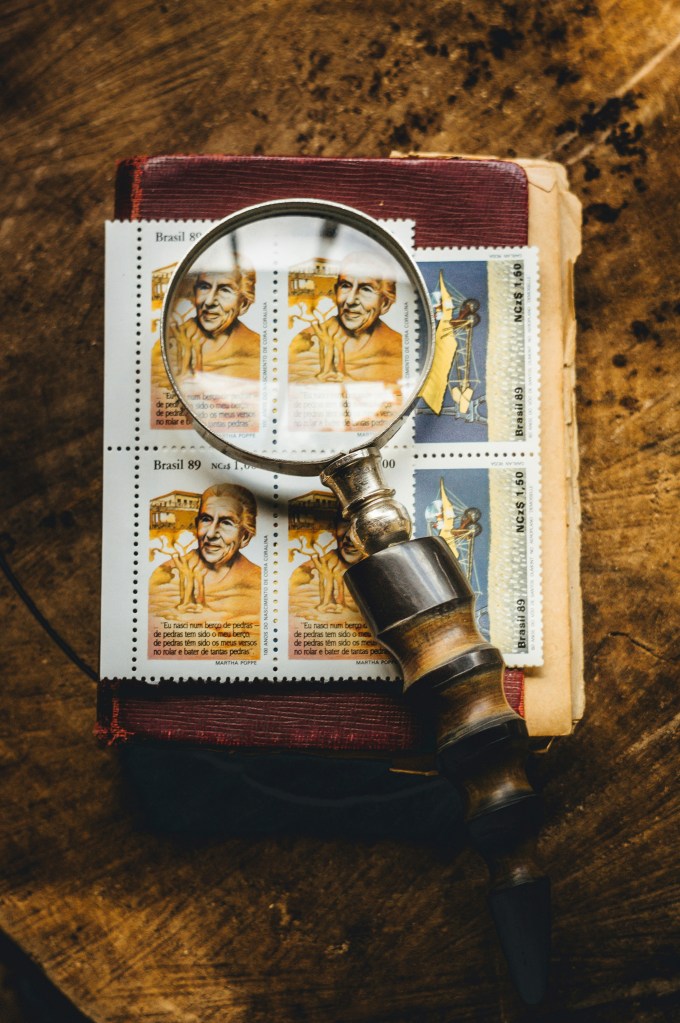
Cultural Reflections: Stamps as Historical and Artistic Icons
Stamps are not merely instruments for mail postage; they are significant cultural artifacts that offer a window into the societies from which they originate. Each stamp, through its design and imagery, captures aspects of cultural heritage and values, turning these tiny pieces of paper into icons of national identity. The art depicted on stamps ranges from historical figures and monumental events to daily life and native wildlife, encapsulating the essence of a country’s pride and heritage. This transformation of postage into a canvas for cultural storytelling allows nations to communicate their unique narratives and traditions across the globe, inviting a deeper appreciation and understanding of their diverse identities.
Cultural stamps
Stamps have evolved to become symbols and icons, transcending their initial postal function. They are collected, studied, and admired by enthusiasts and scholars alike, who seek to uncover the stories and meanings embedded within their designs. Stamps as icons represent a nation’s achievements, commemorate significant events, and honor influential figures, serving as lasting tributes passed from generation to generation. This iconic status further positions stamps as valuable educational tools, enabling individuals to explore and engage with the world’s rich tapestry of cultures and histories.
Stamps offer a unique lens through which we can explore cultural heritage and artistic expression. As reflections of a nation’s identity and values, they foster a deeper connection and understanding between people of different cultures. By appreciating the art and symbolism of stamps, we can gain insights into the diverse narratives that shape our world, highlighting the importance of stamps as tools for mail and as vessels of cultural and artistic significance.
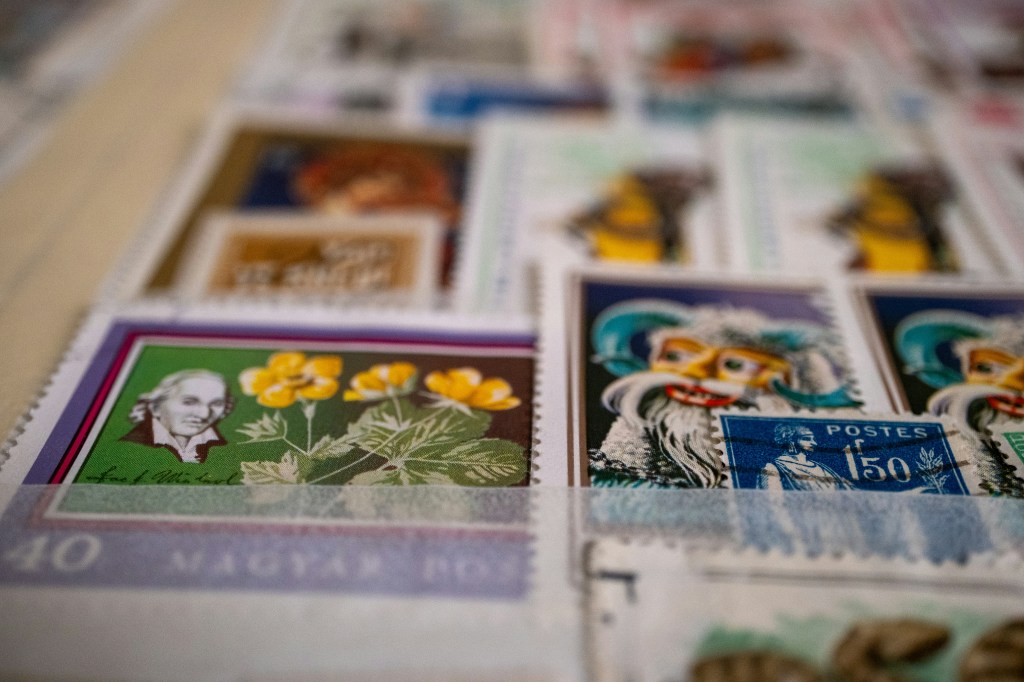
Technological Advances: Digital Age Innovations in Stamp Collecting
The digital age has revolutionized many hobbies, and stamp collecting is no exception. Advancements in digital technologies have enhanced the philatelic experience, making it more accessible and interactive. From online catalogs to virtual exhibitions, these platforms not only facilitate the buying and selling of stamps but also provide a community for collectors to connect and share their passion from anywhere in the world.
Digital stamp collecting
Online catalogs serve as invaluable resources for stamp enthusiasts. Notable examples include the American Philatelic Society’s digital library, the Scott Online Catalog, and the Stanley Gibbons Online Catalog. These sites offer a wealth of information on stamp issues, varieties, and valuations, acting as primary sources for researchers and collectors alike. The advent of online databases has made it easier for collectors to access detailed information and histories of stamps, significantly enhancing their collecting experience.
Online forums and exhibitions represent another layer of digital stamp collecting. Platforms like Stampex Virtual, Stamp Circuit, and Stampboards allow collectors to engage in discussions, share knowledge, and participate in virtual exhibits. This virtual engagement lets enthusiasts view rare and unique stamps without leaving their homes.
However, the move to digital presents challenges, especially concerning authenticity and preservation. While online platforms are beneficial in expanding one’s collections, they also pose a risk of scams. With this in mind, institutions such as the Philatelic Foundation provide authentication services to help collectors verify the legitimacy of their stamps. Despite these hurdles, the evolution of stamp collecting continues to foster a connected community of enthusiasts worldwide, demonstrating how traditional hobbies can thrive and adapt in the digital era.
Conclusion: Continuity and Evolution – The Enduring Allure of Stamp Collecting
The allure of stamp collecting transcends mere hobby, embedding itself into the cultural fabric with a timeless charm. This activity is not just about collecting stamps; it’s a pursuit that cultivates patience, attention to detail, and a profound appreciation for art and history. For a stamp collector, the tactile joy of flipping through albums and the visual feast of designs from distant lands fosters a unique connection to the global tapestry. In an age driven by rapid technological advancements, the simple delight of stamp collecting serves as a reminder of the value of slowing down, savoring the moment, and appreciating the beauty in detail.
Moreover, as a hobby, stamp collecting boasts an enduring appeal that withstands the test of time. It bridges generations, creating shared experiences and dialogues between the young and the old. This enduring hobby, rich in its diversity, offers insight into nations’ cultural, historical, and artistic milestones. What starts as a pastime can evolve into a passionate pursuit, with collectors embarking on a lifelong journey of discovery and learning. Collecting, categorizing, and preserving stamps cultivates patience, organization, and research skills, enriching the collector’s life beyond the hobby.
Enduring legacy of stamp collecting
The legacy of philately is profound. It’s not just about the stamps themselves but what they represent: the flow of history, the exchange of ideas, and the celebration of milestones and extraordinary moments captured in miniature art. Stamps are a reflection of humanity’s achievements, struggles, and aspirations. This legacy is preserved and perpetuated through clubs, exhibitions, and online communities connecting worldwide philatelists. By continuing to engage with stamps, a stamp collector is preserving a piece of history and contributing to a narrative that spans centuries, ensuring that the legacy of stamp collecting remains vibrant for future generations.
This hobby encapsulates the human desire for knowledge, connection, and expression. As it adapts and evolves with the times, stamp collecting proves that there is always room for traditions that speak to the heart in the dance of progress. The combination of historical richness and social engagement ensures that stamp collecting’s allure and legacy will endure, irrevocably woven into the fabric of our shared human experience.
Sources
https://www.britannica.com/topic/philately
https://postalmuseum.si.edu/exhibition/the-queen%E2%80%99s-own-postal-reforms-that-transformed-the-mail/the-worlds-first-postage-stamps
https://www.somestamps.com/pages-about-site/design-evolution.htm
https://libguides.rice.edu/c.php?g=1284052&p=9425949
https://www.history.com/topics/american-revolution/stamp-act
https://catalogue.swanngalleries.com/Lots/auction-lot/-AMERICAN-REVOLUTION–PRELUDE–Stamp-from-the-Stamp-Act-of-1?saleno=2546&lotNo=21&refNo=772956
https://www.zocalopublicsquare.org/2019/12/08/the-postage-stamps-that-flew-amelia-earhart-across-the-world/ideas/essay/
https://medium.com/@findyourstampsvalue/the-role-of-technology-in-modern-stamp-collecting-cf76f8d5dcda
About Collectibles Insurance Services
Collectibles Insurance Services has been protecting collections since 1966 and all coverage is provided by a carrier with a group rating of “A” (Excellent) by AM Best, the leading rating agency for the insurance industry.
Comprehensive coverage includes, but is not limited to: accidental breakage, burglary, fire, flood, loss in the mail, theft, natural disasters, and other causes of loss unless specifically excluded from the policy. Deductibles start at $0 for collector policies and we provide coverage for the market value of your collection for losses in excess of $50.
Additionally the protection extends At home and away, and we don't require collection itemization and serial number nor extensive paperwork and red tape.
